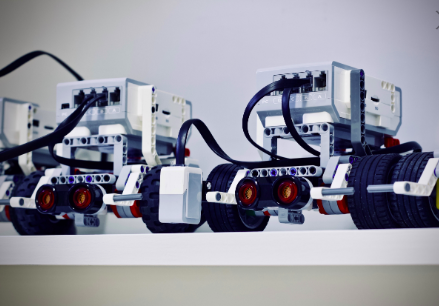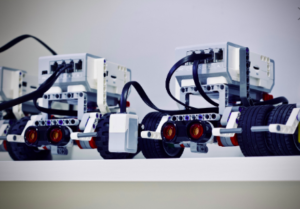Robotics is a growing industry with the potential to change the world of work as we know it. With the rise of automation and artificial intelligence, many jobs that have traditionally been carried out by human beings are now being done by machines. While this change can be exciting, it can also be daunting. Will robots take over all our jobs? What does the future of work look like? In this blog post, we will explore these questions and more to help you better understand the impact of robotics on the world of work.
What is robotics?
Robotics is the branch of technology that deals with the design, construction, operation, and application of robots and computer systems for their control, sensory feedback, and information processing. Robotics is related to the fields of electronics, engineering, mechanics, and software engineering.
The word robotics was first used by Czech playwright Karel Capek in his 1921 play R.U.R., which stands for Rossum’s Universal Robots. The word robot comes from the Slavic word robota, meaning forced labor or drudgery. Robotics has been defined as “the science and technology of robots and their design, manufacture, applications and control” by Japanese roboticist Masahiro Mori.
Robots are increasingly becoming a staple in many industries including manufacturing (auto industry), food and beverage (packaging), healthcare (pharmaceuticals), logistics (transportation), military defense (bomb disposal), space exploration (remote maintenance) and more. With the increasing use of robots in these various industries there is a heightened interest in understanding how they work as well as their potential impact on society both present and future.
The different types of robots
There are four main types of robots:
#1. Industrial Robots
Industrial robots are the most common type of robot. They are used in factories to build things like cars, computers, and other products.
#2. Service Robots
Service robots are used to help people with tasks like cleaning, cooking, and delivering items.
#3. Healthcare Robots
Healthcare robots are used to help patients with tasks like physical therapy and taking medication.
#4. Military Robots
Military robots are used by the armed forces to help with tasks like surveillance and bomb disposal.
Advantages and disadvantages of robotics
The advantages of robotics are that they can be used to automate repetitive and hazardous tasks, to speed up production processes and to increase efficiency. They can also be used to create customized products or services, and to provide personalized service. The disadvantages of robotics are that they can be expensive to purchase and maintain, and they may require specialized training for operators. There is also the potential for accidents or errors when using robots, which could lead to injuries or damage to property.
How will robotics change the world of work?
Robotics has the potential to change the world of work as we know it. With the ability to automate tasks and processes, robotics has the potential to make many jobs obsolete. This could result in large-scale unemployment, as well as a drastic change in the way that work is done.
In addition to making many jobs obsolete, robotics will also change the nature of work itself. With robots able to do things like lift heavy objects and work in dangerous environments, there will be a need for less human workers in many industries. This could lead to an overall decrease in wages, as well as an increase in inequality.
While there are many potential positives to robotics, it is important to consider the potential negatives as well. The large-scale changes that robotics will bring about could have a significant impact on our society and economy. It is important to consider all of these impacts before fully embracing robotics.
Case studies
There is no doubt that robotics is changing the world of work. One area where this change is particularly apparent is in manufacturing. Robotics has already had a major impact on manufacturing, with many factories now using robots to carry out tasks that were previously carried out by human workers.
This change has not been without its challenges, however. Some workers have found themselves replaced by robots and have had to find new jobs as a result. There has also been concern about the safety of working with robots, as there have been some high-profile accidents involving factory workers being injured by them.
Despite these challenges, it seems clear that robotics is here to stay and will continue to shape the world of work for years to come. In fact, many experts believe that we are only just beginning to see the full potential of what robotics can do. As technology advances, it is likely that we will see even more amazing and transformative changes in the world of work thanks to robotics.
The future of robotics
The future of robotics is shrouded in potential but fraught with uncertainty. But despite the many unknowns about the future, there are a number of factors that suggest that robotics will have a profound impact on the world of work.
First, the declining cost of robots and advances in artificial intelligence (AI) are making them increasingly capable and affordable for a wider range of tasks. This is already starting to lead to increased adoption of robots in manufacturing, logistics, healthcare and other sectors.
Second, as robots become more widespread, they are likely to create new types of jobs and business opportunities. For example, we might see the rise of professional robot operators or service technicians.
Third, the increasing use of robots could have major implications for productivity and economic growth. If used intelligently, robots have the potential to boost efficiency and help businesses become more competitive. They could also help address global challenges such as climate change and population ageing.
Fourth, as AI continues to evolve, it is likely that robots will become even more intelligent and capable over time. This could result in them taking on an ever-greater role in society, including in areas such as education, governance and caregiving.
All in all, it is clear that robotics will play an important role in the future of work – but exactly how it will unfold remains to be seen.
Conclusion
There’s no doubt that robotics is changing the world of work. With more and more businesses automating their processes, it’s clear that robots are here to stay. While this change can be daunting, it also presents an opportunity for businesses to become more efficient and productive. For workers, it’s important to stay ahead of the curve and learn how to use these new tools. With the right training, you’ll be able to adapt to the ever-changing landscape of work and thrive in a world with robots.




